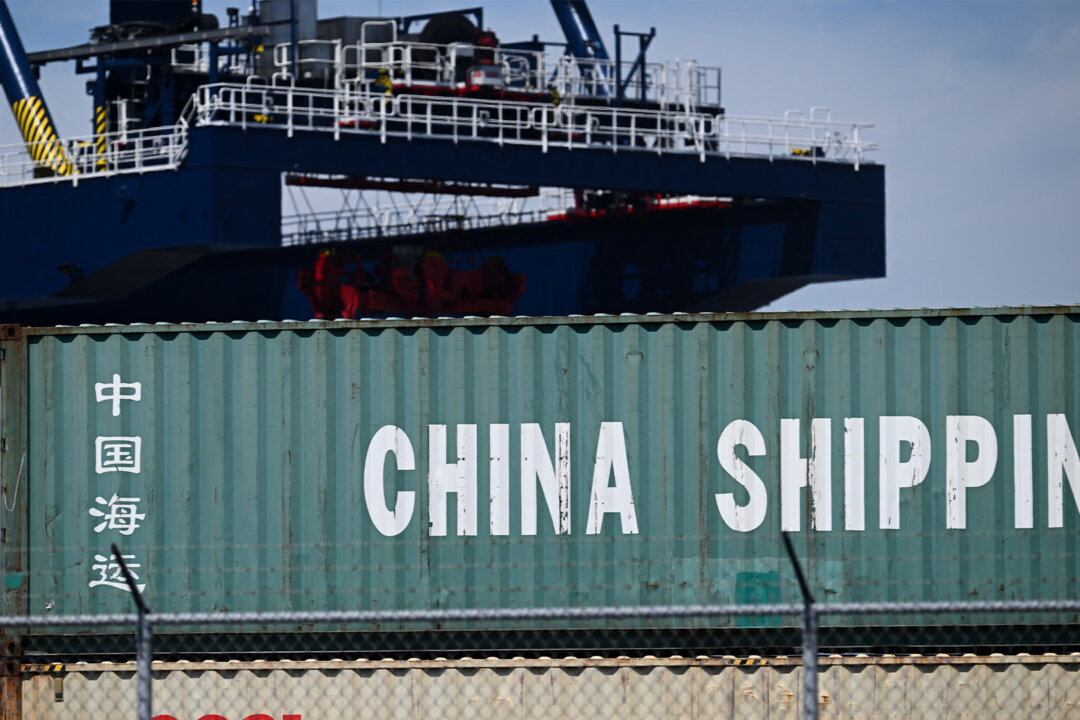The move is part of the effort to boost shipbuilding in the United States and challenge China’s dominance of the industry.
The Trump administration has unveiled plans to impose port fees on Chinese-built ships in an effort to level the playing field in the global shipbuilding market, with scaled-back penalties to limit the impact on American businesses and consumers.
Beginning in mid-October, owners and operators of Chinese-built ships will be charged $50 per net ton of cargo, according to a notice released on Thursday by the Office of the United States Trade Representative (USTR). The fee is set to rise every year, reaching $140 per net ton in 2028.
Service fees for Chinese-built ships will also begin at $18 per net ton or $120 per container, whichever is higher, and will increase over the next three years.
Additionally, car carriers not built in the United States will be charged $150 per car equivalent unit—a measurement representing the space taken up by a standard passenger car.
Each vessel will be charged the fees once per voyage, and no more than five times per year, the USTR said. Ship owners may qualify for a waiver if they place an order for a U.S.-built ship, but if they fail to take delivery of the vessel ordered within three years, the deferred fees will become due immediately.
The USTR also noted plans to impose fees on liquefied natural gas (LNG) carriers, but these will not take effect until 2028.
“Ships and shipping are vital to American economic security and the free flow of commerce,” U.S. Trade Representative Jamieson Greer said in a statement announcing the changes. “The Trump administration’s actions will begin to reverse Chinese dominance, address threats to the U.S. supply chain, and send a demand signal for U.S.-built ships.”
The measures announced Thursday are more moderate than the original proposal released in February, under which ships built in China would be charged up to $3.5 million each time they docked at a U.S. port. That earlier version would have also imposed fees based on how many China-built ships are in a fleet or based on prospective orders of ships from China.
The initial proposal sparked strong opposition from the shipping industry, which said that the fees would disproportionately affect American-owned carriers operating short-sea routes between domestic ports, citing a lack of competitive alternatives in the global market. Industry groups also warned that increased port charges would ultimately be passed on to U.S. consumers through higher prices.
The report details Beijing’s discriminatory, non-market practices, including state direction of both publicly owned and private enterprises, extensive subsidies, and unfair labor practices. It also highlights government support for excess production capacity of steel, along with state-led industrial consolidation aimed at creating barriers for foreign companies to access the Chinese market.
According to the report, these policies have “undercut competition and taken market share with dramatic effect,” boosting China’s share of global shipbuilding output from less than 5 percent in 1999 to more than 50 percent by 2023. This level of dominance gives China considerable influence over the pricing and availability of ships used in international trade.
Today, Chinese-built vessels make up the majority of the fleets operated by the world’s largest shipping companies, and China itself commands nearly one-fifth of the global commercial shipping fleet.
In contrast, the U.S. shipbuilding industry, once a global leader in the decades following World War II, has suffered a prolonged decline and now accounts for less than 1 percent of global output.

